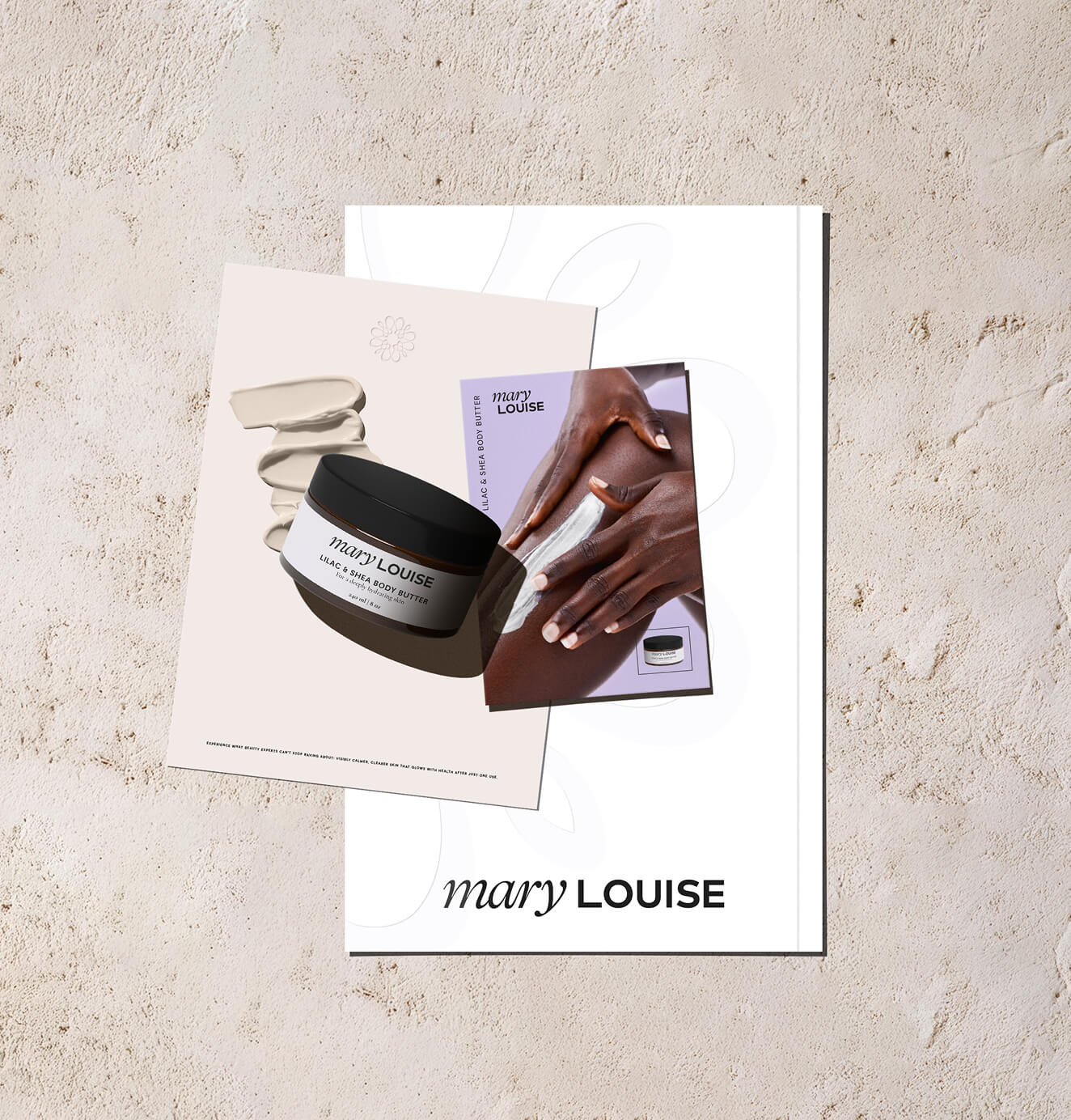The Ultimate Guide to Crafting a Winning Brand Communication Strategy
08/01/2025
Brand Strategy
Discover how to create a brand communication strategy that aligns your message, engages your audience, and elevates your business impact.

A successful brand communication strategy is essential for any business looking to engage effectively with its target audience. It's important to understand how different marketing channels and tactics work together to create a cohesive message that resonates with your customers. This guide will help you develop a comprehensive brand communication strategy tailored to the unique needs of your business. You'll learn how to create content that speaks to your target audience, develop a messaging strategy that resonates with customers, and use data to measure the success of your efforts. Looking for all the answers but don't know where to start?
.png)


What is Brand Communication?



Brand communication is how a brand shares its message and unique value proposition with its target audience.
Brand communication includes all of the various touchpoints you use, such as print ads, digital advertising, email campaigns, social media posts, website content, and more. When done correctly, brand communication can create an emotional connection with customers, leading to improved customer loyalty and increased sales.
Why Does My Business Need Brand Communication?
Brand communication is an essential part of any business's marketing efforts.
It provides an avenue to communicate with your customers and build relationships with them.
By crafting a compelling brand message and delivering it through all available channels, businesses can create an emotional connection that resonates with their target audience, builds affinity, and encourages people to purchase their products or services.
Being strategic with your brand communication also helps businesses stand out from the competition, as well as increase customer loyalty and lifetime value.
What is Brand Communication Strategy?
A brand communication strategy is an overarching plan for building effective brand communications. It includes a detailed analysis of the target market, messaging goals, communication channels, marketing materials, and marketing channels.
A strategic brand communication plan also outlines specific tactics to be used in order to reach the desired outcome – whether it’s increased sales or greater customer loyalty.
A successful brand communications strategy should include some combination of content marketing, digital advertising, email campaigns, search engine optimization (SEO) and search engine (SEM) efforts, public relations initiatives, social media posts, and other types of outreach.
Each channel should have its own objectives and activities within a brand communications strategy, complete with tactics tailored to fit the overall business strategy.
A brand communications strategy aims to create an emotional connection between a company and its customers to build customer loyalty and increase sales. This connection is created through targeted messaging that communicates the brand's core message and provides customers with value-added content they can use.
Ten Advantages of Brand Communication Strategy
- Improved Brand Awareness: Communication Strategies will help your business gain more visibility and recognition across different channels, including social media channels, digital advertising, email campaigns, and more.
- Increased Customer Engagement: Businesses can increase customer engagement and brand loyalty by creating a strong connection with customers through targeted messaging.
- Enhanced Reach: Communication Strategies will help you reach a larger audience, as well as target specific demographics that may be interested in your product or service.
- Increased Sales: By communicating the unique benefits of your products and services to customers, businesses can create an emotional connection that leads to increased sales.
- Improved Brand Reputation: By communicating in a consistent and positive manner, businesses can create an image of trustworthiness and reliability.
- Superior Brand Differentiation: A Brand Communication Strategy allows you to distinguish your business from competitors by highlighting the unique features and benefits of your product or service.
- Cost Savings: Having a comprehensive strategy for communicating with customers can save money in the long run, as you’ll be able to use more cost-effective methods for reaching your target audience.
- Improved Brand Consistency: With the strategy in place, you can ensure that all messaging is consistent and in line with your overall marketing goals.
By creating an effective strategy, businesses can create emotional connections with customers, build loyalty, increase sales, and improve their reputation. With a well-crafted strategy in place, businesses can maximize the impact of their branding efforts and stand out from the competition.
If you’re looking to craft an effective brand communication strategy for your business, our experienced team at The Branded Agency can provide you with expert guidance. Contact us today to discuss your business’s strategy and get started on building a successful brand.
How to Build a Brand Communication Strategy?












Building a successful integrated brand communication strategy involves understanding your target audience, crafting an appropriate message, and then delivering it through the right channels.
Here are some tips to get started:
Analyze Your Target Audience
Analyzing your target audience is critical in building a successful brand communications strategy. This means understanding who they are, what their needs and wants are, and what motivates them. Knowing this will help you create content that resonates with your target audiences and speaks directly to their needs to develop loyal customers.
Start by researching your current customers, as well as the core customer groups you’d like to reach. Try to gather data on their demographics, interests, and buying habits. This will help you create more accurate buyer personas, which are profiles of your ideal customers.
You should also consider the channels that your target audiences use. For example, if your target audience is Millennials, you may want to focus on digital channels such as social media and email campaigns. You may want to consider traditional print ads or television commercials if your audience is older customers.
By analyzing your target audience and their channels, you can develop effective strategies that speak directly to them and encourage them to purchase your products or services.
Identify Customer Journeys
Once you’ve identified your target audience and customer insights, the next step is to create customer journeys for them. A customer journey is a map of how customers interact with your brand, beginning at initial awareness, moving through consideration to conversion and purchase, and all the way to loyalty.
When creating customer journeys, think about each stage of the buying process and what content or messaging would resonate with potential customers at each stage.
- In the customer awareness stage, they are just beginning to sense a challenge or problem. Create content explaining your product or service and why it’s valuable.
- In consideration, the customer determines which solution might best suit their needs. Provide multimedia demonstrating how your product or service is different and ultimately better than other available options.
- In conversion, the customer chooses to purchase your product or service. Share testimonials and guarantees to reduce the sense of risk around the purchase.
- In loyalty, the customer returns to make additional purchases and may tell others how satisfied they are with the product or service and even the organization that provided it.
By mapping out customer journeys, you can ensure that you’re creating the right type of content for each stage in the buying process. This will help you create a more effective communication strategy that speaks directly to customers and encourages them to buy from your business.
Analyze Your Competitors
Another important step in developing a strategy is to analyze your competitors’ strategies. Take note of what channels they are using and the types of messages they are sending out.
Identifying what tools and tactics your competition employs will help you determine what’s already working in the market, as well as provide inspiration and ideas for new approaches you can use to differentiate your message.
Also, be sure to research the results of their marketing campaigns and take note of which channels and marketing efforts are working best for them. This will help you determine where to focus your own efforts and which tactics are worth investing in.
Determine Your Brand Values and Unique Selling Proposition
Your strategy should be grounded in your core values and mission statement. It’s important to ensure that all of your brand messages are aligned with these overarching principles and that they convey your brand's unique selling proposition (USP).
Your USP should be the one thing that sets you apart from your competitors. It could be a unique product or service, a special deal, an innovative approach to customer service, or anything else that sets you apart from the competition.
By determining your USP, you can create a message and design an entire communication campaign that aligns with your core values and resonates with your target audience.
Define Your Brand Voice
Once you’ve determined your core values and USP, it’s time to craft your brand voice. Your Brand's Voice is the tone and language used in all of your communication channels and marketing activities. It should be consistent across all channels and recognizable by customers, so they know who’s speaking to them.
It should be tailored to your target audience and convey the message you want to deliver. For example, if you’re targeting Millennials, your brand voice may be more casual and conversational, while a more formal tone may resonate better with an older demographic.
By crafting an appropriate Brand Voice, you can create content that resonates with customers and helps to strengthen your Communications Strategy.
Learn more about your brand tone.
Develop Key Messaging Points
Once you have an understanding of your target audience and have determined your brand voice, it’s time to develop key messaging points for your communication. These messages should be succinct, consistent, and aligned with your mission statement.
Your messaging should also include a call-to-action that encourages customers to take the next step. This could be signing up for a newsletter, making a purchase, or attending an event.
By developing key messaging points, you can ensure that your strategy is focused and effective in reaching the right people with the right message at the right time.
Create a Comprehensive Reporting System
Creating a comprehensive reporting system is critical for evaluating the success of your strategy. You should define success metrics such as key objectives, key performance indicators, website traffic, social media engagement, sales figures, and customer feedback.
By regularly reviewing these metrics, you can identify successes and areas that need improvement. This will help ensure your strategy continually evolves and adapts to your customer's needs.
Align Your Team with the Strategy
Finally, the last step to crafting an effective brand communications strategy is ensuring that your team is aligned with it. It’s important for everyone in the organization to understand and be able to execute the strategy effectively.
By providing training on the strategy and regularly reviewing progress, you can ensure that everyone on your team understands what’s expected and is able to contribute effectively.
Want to learn more about brand platforms, Brand Strategy and Brand Identity? Keep reading!
If you need help with your companies brand strategy and identity, contact us for a free custom quote.
Amplifying Brand Communication Strategy

Your brand communication strategy is only as good as its reach. In order to ensure that your message is heard, you need to find ways to amplify it. Here are some effective ways to amplify your brand strategy.
Choose the Right Marketing Channels
When it comes to amplifying your brand strategy, the right communication channels and marketing channels are key. Identify the communication channels and marketing that best reach your target audience and focus on creating content for those channels. For example, if you’re targeting Millennials, platforms such as Instagram or Snapchat might be a good fit.
Develop a Multi-Channel Approach
In order to maximize your reach, you should develop a multi-channel approach. This means taking advantage of all available channels and platforms to get your message across. From social media to email campaigns and from website content optimization to influencer marketing, there are many different ways to amplify your strategy.
By leveraging multiple channels, you can reach your target audience more effectively and ensure that your Brand Communication Strategy is as successful as possible.
Create Content Around Core Messaging Points
It’s important to create content around your core messaging points in order to amplify your strategy effectively. This includes creating blog posts and videos that illustrate the value of your product or service, as well as stories from customers who have benefited from it. Make sure that your core messaging is consistent across all your marketing materials.
By creating content that resonates with customers, you can ensure that your core message is reaching the right people with the right message.
Keep Communication Consistent Across All Channels
Your messaging should be congruent and on-brand across all channels like e-mail, telephone or website inquiries, social media platforms, and ad campaigns to ensure that customers recognize your brand and understand your value. This can help create trust and loyalty with customers and result in long-term success for your brand communication strategy.
Create a Consistent Visual Identity Across Platforms
Creating a consistent visual identity across platforms is essential for amplifying strategy. This means that all of your content should be styled in the same way and feature the same logos, colours, and fonts.
This will help ensure that customers recognize your brand no matter which platform they’re on. It will also make your communication more effective by creating a unified message across multiple channels.
Leverage Influencers to Amplify Reach
Finally, you can leverage social media influencers to amplify the reach of your campaigns. By working with influencers who have the same target audience as you do, you can ensure that your message is seen by more people.
By leveraging relationships with influencers, you can also create more personalized content that resonates with customers and increases the effectiveness of your marketing communication.
Incorporate User-Generated Content
User-generated content (UGC) is a great way to amplify your brand. Leveraging customer reviews, stories, and images can help you create content that resonates with customers and shows target customers what your product or service is all about.
Leverage Automation and Personalization
Leverage automation and personalization to amplify your brand communication strategy. Automation tools allow you to send personalized emails and messages at scale, while personalization techniques can help you ensure that the right message is reaching the right people.
You can create effective marketing communications that resonate with customers and drive results by leveraging automation and personalization.
Develop Corporate Social Responsibility Initiatives
It’s important to develop corporate social responsibility (CSR) initiatives that are aligned with your brand communication strategy. This can include sponsoring a local charity or hosting an event that raises awareness for a cause.
By taking on socially responsible initiatives, you can demonstrate your commitment to making the world a better place and help amplify your brand communication strategy.
Listen to Customer Feedback & Adjust Strategy
It’s important to listen to customer feedback and adjust your brand communications accordingly. By continuously monitoring customer sentiment and adjusting your strategy as needed, you can ensure that your brand communication is always up-to-date with the times increasing customer satisfaction.
Provide Exceptional Customer Service Experiences
Finally, providing exceptional customer service experiences is key to amplifying your brand loyalty. By ensuring that customers have an excellent experience when working with your company, you can ensure that they’ll remember your Brand and share it with their friends and family.
Monitor Brand Reputation & Engagement
Monitoring brand reputation and engagement metrics are also essential for amplifying brand communication. By tracking how customers are engaging with your content, you can ensure that you’re sending the right message at the right time to the right people.
By keeping an eye on these metrics, you can adjust your brand communications in real-time to ensure that you always deliver the best experience possible for your customers.
Analyze Campaign Performance
Analyzing the performance of your campaigns is essential for optimizing brand communications. By tracking how customers engage with your content and adjusting accordingly, you can ensure that all of your efforts result in maximum impact.
By continuously analyzing campaign performance, you can ensure that your brand communications always reach the right people with the right message.
Implement A/B Testing to Refine the Strategy
Finally, implementing A/B testing is a great way to refine your brand communications. By testing different messages and formats, you can ensure that you’re always delivering the most effective message possible.
A/B tests consist of a randomized experiment that usually involves two variants, although the concept can also be extended to multiple variants of the same variable.
By using A/B testing, you can optimize your messaging and tactics to ensure alignment, impact, and reach.
Three Examples of Successful Brand Communication Strategies

1. Apple: Apple’s brand communications emphasize simplicity, innovation, and reliability. By leveraging these core messages, they have created a powerful brand that resonates with customers around the world.
2. Starbucks:Starbucks leverages a combination of humour and mindfulness in their brand communications to create an engaging experience for customers. They focus on topics such as sustainability and mindfulness to create an emotional connection with their customers.
3. Nike: Nike’s brand communications focus on inspiring people to “Just Do It” and emphasize the importance of pushing boundaries and achieving success. By leveraging powerful stories, they have created an engaging brand communication strategy that resonates with customers.
By taking a closer look at these successful brand communications strategies, you can gain valuable insights into what works and what doesn’t when it comes to crafting an effective brand communication strategy.
Conclusion
Creating an effective brand communication strategy can be a difficult and time-consuming endeavour. Crafting the right messaging and implementing the best tactics is essential for ensuring maximum impact. Fortunately, with the help of our experienced professionals, businesses don’t have to go it alone.
The Branded Agency has vast experience in crafting powerful brand communication strategies and can help you create an effective Strategy for your business. With our help, you can ensure that your brand communications deliver the right message to the right people at the right time.
By tapping into The Branded Agency’s expertise, you can take your brand communication to the next level and ensure that your messages are reaching their intended audience and resonating with them. With us, you can craft a powerful strategy that will amplify your brand and drive growth. Contact us today.
Contact us today to learn more about our custom Brand Communication Strategies and find out how we can help you take your business to the next.

Sloane Avery
As entrepreneurs, they’ve built and scaled their own ventures from zero to millions. They’ve been in the trenches, navigating the chaos of high-growth phases, making the hard calls, and learning firsthand what actually moves the needle. That’s what makes us different—we don’t just “consult,” we know what it takes because we’ve done it ourselves.
Want to learn more about brand platform?
If you need help with your companies brand strategy and identity, contact us for a free custom quote.
We do great work. And get great results.
+2.3xIncrease in revenue YoY
+126%Increase in repurchase rate YoY








+93%Revenue growth in first 90 days
+144% Increase in attributed revenue








+91%Increase in conversion rate
+46%Increase in AOV








+200%Increase in conversion rate
+688%Increase in attributed revenue












